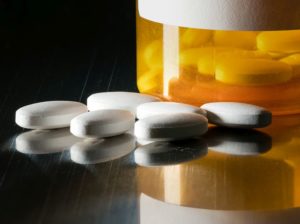 When discussing treatment options for patients misusing and/or addicted to drugs such as: Opioids/Heroin, Crack Cocaine and Cocaine, Methamphetamine, MDMA, PCP, Alcohol, and Benzodiazepines such as Xanax, Clonazapam, Valium etc, there are four alternative treatment pathways that a person can take to succeed in quitting these drugs, however, they are not the same for each drug and the difficulties differ widely for each patient.
When discussing treatment options for patients misusing and/or addicted to drugs such as: Opioids/Heroin, Crack Cocaine and Cocaine, Methamphetamine, MDMA, PCP, Alcohol, and Benzodiazepines such as Xanax, Clonazapam, Valium etc, there are four alternative treatment pathways that a person can take to succeed in quitting these drugs, however, they are not the same for each drug and the difficulties differ widely for each patient.
When discussing treatment options for patients misusing and/or addicted to drugs such as; Opioids/Heroin, Crack Cocaine and Cocaine, Methamphetamine, MDMA, PCP, Alcohol, and Benzodiazepines such as Xanax, Clonazapam, Valium etc, there are 4 different routes that a person can take to succeed in quitting these drugs, however, they are not the same for each drug and the difficulties differ widely for each patient and situation.
Call Us Now For Immediate Help
The four paths are:
 Cold turkey, which is just stopping and using support via individual therapy (CBT) as well as group support settings such as AA, NA Smart recovery or IOP (Intensive Outpatient Therapy) Occupational Therapy and Sober Coaching.
Cold turkey, which is just stopping and using support via individual therapy (CBT) as well as group support settings such as AA, NA Smart recovery or IOP (Intensive Outpatient Therapy) Occupational Therapy and Sober Coaching.
MAT (Medication Assisted Treatment) is using a medicine to help mitigate symptoms while the patients brain heals, short or long term. For Opioid addiction (OUD) Partial agonists such as Buprenorphine (Suboxone, Zubsolv, Bunavail, Sublocade) or the blocker Vivitrol or the full agonist opioid Methadone. There are blockers for Alcohol addiction such as Naloxone and antibuse and then there is the controversial use of Ootropics (hallucinogens such as LSD, Ahyuasca, Psyllicybin, Mescaline etc which will be covered in another article.
In-patient treatment which is the highest level of care and is where a patient will stay at a facility for an extended time while detoxing and stabilization. In-patient stays vary due to need and insurance coverage averaging 28 days per stay. Outcomes after in patient stays for Opioid addiction are very poor unless MAT is used as a follow on. Relapse rates without Buprenorphine (Suboxone) can be as poor as a 50% relapse rate on the very first day of release with another 45% relapse within 3 months. Most Opioid addicted patients will do inpatient stays 3 to 7 times due to the poor success rates.
Call Us Now For Immediate Help
Only Opioids/Heroin have a treatment that helps to eliminate the physical withdrawal symptoms to help the patient remain comfortable during recovery. That medication is called Buprenorphine (i.e. Suboxone, Zubsolv, Bunavail, Sublocade). This medication is called a partial agonist which means that it is very safe, does not get the patient “high”, is not additive in that unlike most drugs with buprenorphine you do not get more effect by taking more. This is called a ceiling effect. This medication is also non addictive and allows the brain to heal with almost no side effects.
Buprenorphine alone or in combination with Therapy has a very high success rate at BRIGHTSIDE Clinic.
None of the other drugs currently have a magic bullet medication like Buprenorphine.
Crack Cocaine and Cocaine, Methamphetamine, MDMA and PCP, are unfortunately treated by the patient going cold turkey (just stopping) and relying heavily upon support via individual Cognitive Behavioral Therapy (CBT) as well as group settings such as AA, NA, Smart recovery or IOP (Intensive Outpatient Therapy) Occupational Therapy (OT) and Sober Coaching. Often a patient will need to have a short term (28 day) stay for an environmental change in an in-patient rehabilitation facility which can really help them get started.
Call Us Now For Immediate Help
Alcohol and Benzodiazepines (Xanax, Valium etc) are different in that quitting them too quickly can put the patient at risk of seizure and death and so it is recommended that Alcohol and Benzodiazepine detox be done in a detox facility before entering a residential rehab facility although therapy can be very useful even prior to detox.
Prior to treatment for any drug addiction it is always advisable and ideal to get perspective via a CBT Therapist prior to treatment, however the general escalation is to try CBT and/or MAT (for Opioids) and then if success is limited we would recommend detox and residential treatment followed up by MAT (Opioids) intensive outpatient treatment (IOP) and/or Cognitive Behavioral Therapy (CBT) Occupational Therapy (OT) and Sober Coaching since the relapse rate is extraordinarily high without post residential support.
To help someone find help with an Opioid problem call BRIGHTSIDE clinic 224-205-7863 or for more info go to www.brightsideclinic.com
To learn about helping people with OUD and possibly donate, please call me at 847-989-8996 or go to our brand new 401(c)3 called Help4Hope Addiction Bridge funding www.help4hopeaddictionbridgefunding.com which helps people who have no money, pay for them to take that big first step until they can stabilize and care for themselves.
Have an idea for a new article? Email John.
